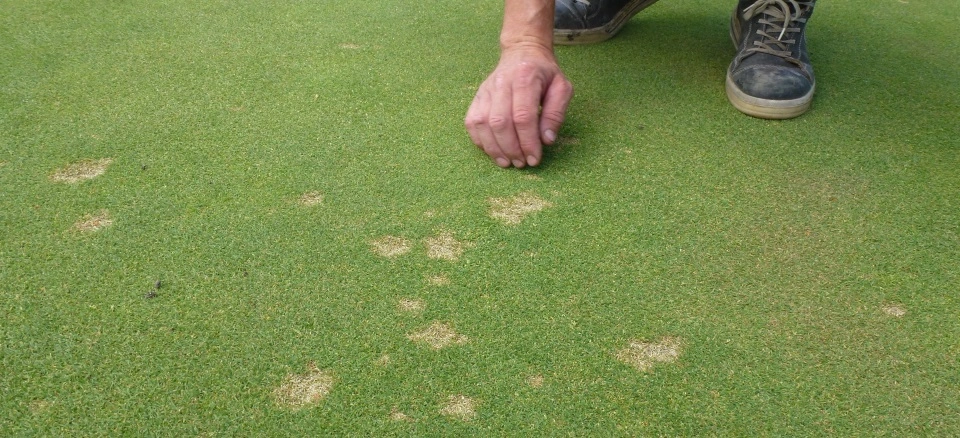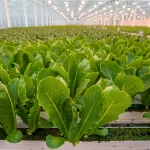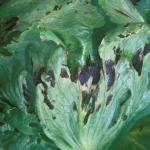Clarireedia spp.
What is Clarireedia spp.?
Our guest writer Jessica O’Hanlon, from Earth Microbial, is very familiar with the fungus Clarireedia spp. With golf season approaching for the northern areas, and at the request of our readers, we invited her to write this blog about this grass pathogen. It causes a common turfgrass disease known as dollar spot. This fungus creates small, circular or oblong patches of dead or bleached plant matter [1]. The disease is called dollar spot because the affected areas are usually the size of a silver dollar. Dollar spot mainly affects turfgrass species, including cool-season grasses such as bentgrass, bluegrass, fescue, and ryegrass, as well as warm-season grasses such as bermudagrass and zoysiagrass. However, it can also affect certain agricultural crops such as lettuce, beans, and carrots.
The USDA Census of Agriculture assessed in 2017 that turfgrass and sod production had a total production value of $1.45 billion in the United States [2]. In addition, the World Golf Foundation estimated that in 2016 the golf industry as a whole had an economic impact of $84.1 billion in the United States [3] and golf management spends the most money on dollar spot treatment than any other turfgrass disease [5]. This makes dollar spot research and treatment important from an economic standpoint as well.
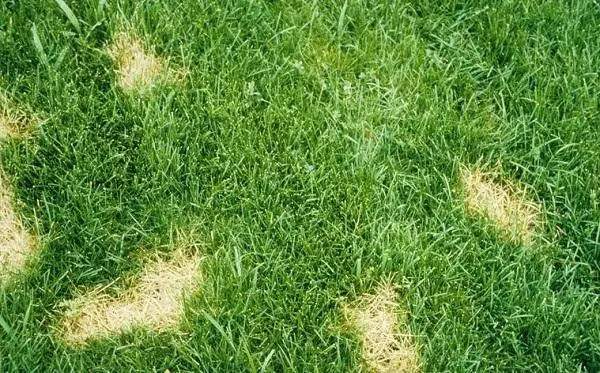
Dollar spot was previously classified in the Sclerotinia genus, but has been reclassified into a new fungal genus, Clarireedia [5,6]. Recent studies show that there are at least six pathogenic species responsible for dollar spot [7].
Table 1: Pathogenic Species of Clarireedia [8]:
|
Genus |
Species |
Where |
Target Plant |
|
Clarireedia |
bennettii |
United Kingdom |
Cool-season grasses |
|
Clarireedia |
homoeocarpa |
United Kingdom |
Cool-season grasses |
|
Clarireedia |
hainanense |
China |
Warm-season grasses |
|
Clarireedia |
jacksonii |
Global |
Cool and warm-season grasses |
|
Clarireedia |
monteithiana |
Global |
Warm-season grasses |
|
Clarireedia |
paspali |
China |
Warm-season grasses |
Symptoms of Clarireedia:
Dollar spot can cause significant damage to golf courses, athletic fields, and residential lawns by infecting the leaves and stems of turfgrass. Once the fungus infects the grass, it penetrates the plant’s tissues and begins to grow. One of the primary symptoms of dollar spot is the appearance of circular or irregularly shaped patches of light tan or straw-colored turfgrass that are about the size of a silver dollar, 10-40 mm in diameter [7, 9]. The grass blades in affected areas become thin and brittle, and the disease can cause a significant reduction in the overall health and appearance of the turf. These patches may start out small but can quickly enlarge and coalesce over time, resulting in large areas of dead turfgrass. Other symptoms of dollar spot include light tan or white lesions on grass blades that are shaped like an hourglass or “dog-bone,” as well as the presence of white or pink fungal cobweb-like aerial mycelium in early morning dew or high humidity [10] which is shown in the image below. The tan or white, pea-sized fungal structures can be seen on the turfgrass blades or in the thatch layer.
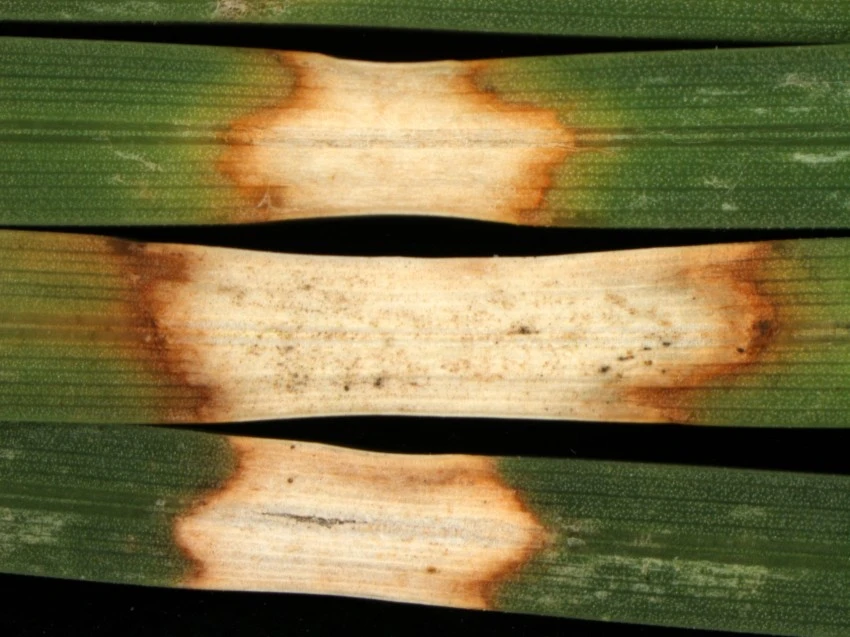
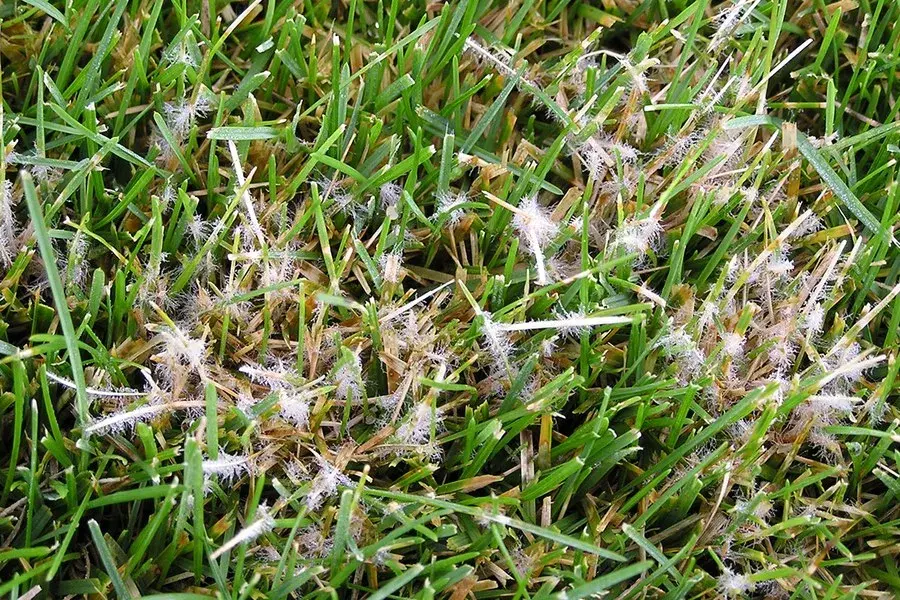
We provide great overviews of many agricultural microorganisms. Subscribe to stay updated!
Life Cycle and Infection Stages:
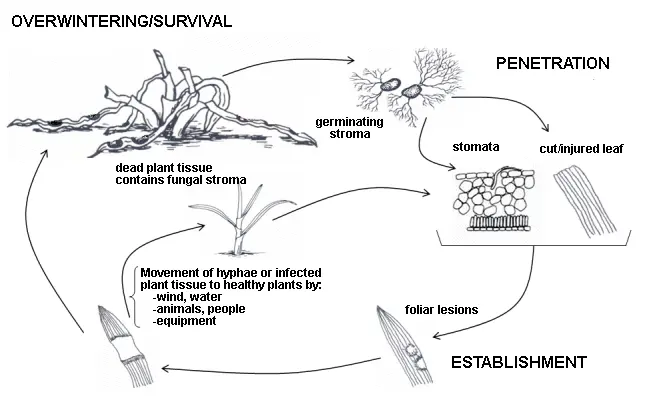
Clarireedia fungi can survive in infected dead plant tissue, however, it is most commonly found in the soil and the thatch layer of turfgrass, waiting until ideal conditions to grow and infect [11]. It can penetrate leaves directly, enter through cut leaf tips, or through stomata. Once inside the plant, hyphae colonize epidermal and mesophyll cells and secrete enzymes and toxins that cause tissue necrosis. When conditions are favorable for disease development, mycelia can grow from infected tissue and spread to nearby plants. Since the fungus does not produce spores, its dissemination relies on the movement of mycelia or infected leaf debris by equipment, people, animals, water, or wind [7].
Growth conditions for Clarireedia:
The disease is most active during warm and humid conditions, often appearing in the late spring or early summer. The disease thrives in temperatures between 60 to 85 degrees Fahrenheit, with high humidity and dew. The fungal spores can survive in the thatch layer or soil for extended periods, and they can spread through mowers, foot traffic, and irrigation systems.
There are several factors that can contribute to the development and severity of Dollar Spot outbreaks, including:
- Climate: Dollar Spot thrives in warm and humid conditions, and outbreaks are more likely to occur during periods of extended high humidity or heavy dew.
- Soil fertility: Dollar Spot is often more severe in turf that does not contain enough nutrients such as Nitrogen or has a low pH, as these conditions can make the grass more susceptible to disease.
- Water stress: Dollar Spot can also be more severe in areas of the turf that are consistently underwatered or over-watered, as this can reduce the overall health and vigor of the grass. Turf that undergoes frequent and tightly spaced summer irrigation is prone to experiencing the most severe cases of dollar spot [11].
- Mowing practices: Dollar Spot can be exacerbated by improper mowing practices, such as mowing the grass too short, which can make the grass more susceptible to disease.
Methods of Prevention and Control:
There are several preventative measures and management strategies that can help control and prevent dollar spot.
- Proper irrigation management: Overwatering and shallow watering can promote the development of dollar spot. Watering the turfgrass deeply and infrequently, preferably in the early morning, can help prevent the disease.
- Fertilization: Proper fertilization can help keep the turfgrass healthy and less susceptible to dollar spot. However, over-fertilization can also increase the risk of disease. It is recommended to follow a regular fertilization program based on soil testing.
- Cultural practices: Proper mowing, thatch removal, and aeration can help reduce the risk of dollar spot development. Regular mowing and removal of clippings can prevent the accumulation of organic matter that can promote fungal growth. Aeration can improve soil drainage and air circulation, which can help prevent the development of disease. In addition, soil pathogen detection sampling is an effective way to characterize diseases in turfgrass and anticipate changes in management [13].
- Fungicides: Chemical control is a popular mitigation technique in severe cases of dollar spot. There are several fungicides available for the management of dollar spot. It is recommended to rotate fungicides with different modes of action to prevent the development of resistance, which recent research has shown dollar spot to be capable of [13,14].
- Inoculants: Inoculants contain beneficial microorganisms such as bacteria and fungi that compete with and suppress the growth of the dollar spot pathogen. Several studies have demonstrated the effectiveness of inoculants in reducing the severity of dollar spot, and they have been found to be a sustainable and environmentally friendly approach to disease management.
Conclusion:
Dollar spot is the most destructive pathogen for turfgrass making research and treatment of this disease important. Research is ongoing to better classify the species and evaluate various treatment techniques, especially more environmentally conscious mitigation steps and products.
Disclaimer:
The information we present in Pathogen Profile is based on collating published peer-reviewed scientific literature and sources we think are reliable. This is by no means an exhaustive review of pathogens. Pathogen Profile gives a small glimpse of what is known about pathogens. We encourage growers to do more research on the pathogens concerning their crops and hydroponic systems. We are not plant pathologists; thus, the information presented in the Pathogen Profile should not be used as professional advice to treat pathogens or operate your system.
References
- Sapkota, S., Martinez-Espinoza, A. D., Ali, E., Vermeer, C. B., & Bahri, B. A. (2020). Taxonomical identification of clarireedia species causing dollar spot disease of turfgrass in Georgia. Plant Disease, 104(11), 3063. https://doi.org/10.1094/pdis-03-20-0603-pdn
- United States Department of Agriculture. USDA. (2019, April). Retrieved March 9, 2023, from https://www.nass.usda.gov/Publications/AgCensus/2017/Full_Report/Volume_1,_Chapter_1_US/
- Matuszewski, E. (2018, May 7). How golf grew to an $84.1 billion industry. National Golf Foundation. Retrieved March 9, 2023, from https://www.ngf.org/how-golf-grew-to-an-84-1-billion-industry/
- Goodman, D. M., & Burpee, L. L. (1991). Biological control of dollar spot disease of creeping bentgrass. Phytopathology, 81(11), 1438-1446.
- Salgado-Salazar, C., et al. “Clarireedia: A new fungal genus comprising four pathogenic species responsible for dollar spot disease of turfgrass.: Fungal Biology Volume 122, Issue 8 (2018): 761-773.
- Groben, G., Clarke, B. B., Murphy, J., Koch, P., Crouch, J. A., Lee, S., & Zhang, N. (2020). Real-time PCR detection of clarireedia spp., the causal agents of dollar spot in turfgrasses. Plant Disease, 104(12), 3118–3123. https://doi.org/10.1094/pdis-04-20-0726-re
- Allen, T.W., A. Martinez-Espinoza, and L.L. Burpee. 2005. Dollar spot of turfgrass. The Plant Health Instructor. DOI:10.1094/PHI-I-2005-0217-02. Updated 2016.
- Zhang, H., Dong, Y., Jin, P., Hu, J., Lamour, K., & Yang, Z. (2023). Genome Resources for four clarireedia species causing dollar spot on diverse turfgrasses. APS Publication. https://doi.org/10.1094/pdis-08-22-1921-a
- Jeffery W, M., Robert A, K., Lambert B, M. C., William C, B., S Bruce, M., & Christina E, W. (2020). In vitro and preventative field evaluations of potential biological control agents and synthetic fungicides for control of Clarireedia Jacksonii sp. nov.. Journal of Plant Science and Phytopathology, 4(1), 001–008. https://doi.org/10.29328/journal.jpsp.1001043
- Dollar spot – Lawns. University of Maryland Extension. (n.d.). Retrieved March 9, 2023, from https://extension.umd.edu/resource/dollar-spot-lawns
- Landschoot, P. (n.d.). Managing thatch in lawns. Penn State Extension. Retrieved March 9, 2023, from https://extension.psu.edu/managing-thatch-in-lawns#:~:text=Thatch%20is%20a%20loose%2C%20intermingled,it%20can%20be%20broken%20down
- Dicklow, B., & Popko, J. (2020, December 22). Dollar spot. Center for Agriculture, Food, and the Environment. Retrieved March 9, 2023, from https://ag.umass.edu/turf/fact-sheets/dollar-spot
- Walsh, B., Ikeda, S. S., & Boland, G. J. (1999). Biology and management of Dollar Spot (sclerotinia homoeocarpa); an important disease of turfgrass. HortScience, 34(1), 13–21. https://doi.org/10.21273/hortsci.34.1.13
- Sapkota, Suraj & Catching, Katherine & Raymer, Paul & Martinez Espinoza, Alfredo & Bahri, Bochra. (2021). New Approaches to an Old Problem: Dollar Spot of Turfgrass. Phytopathology. 112. 10.1094/PHYTO-11-20-0505-RVW.
Jessica O’Hanlon is a Product Scientist at Earth Microbial


